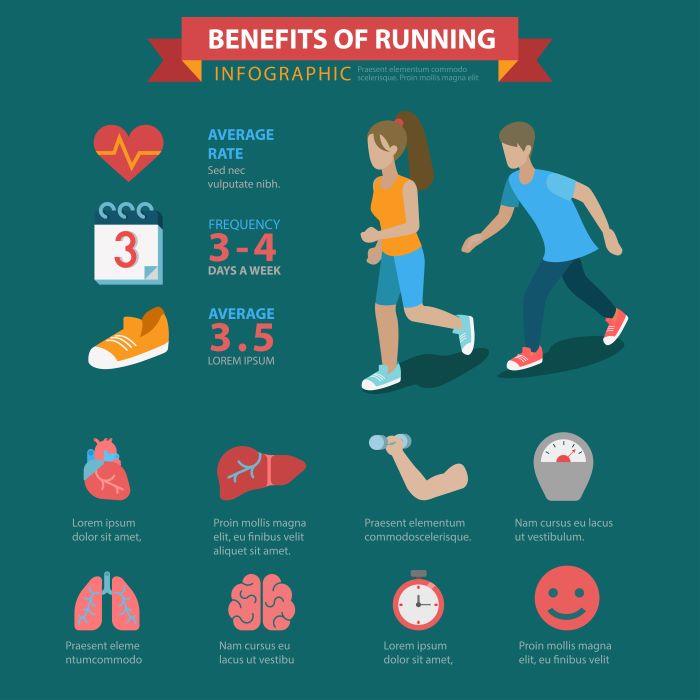Training for a half marathon is not just about running longer distances; it’s a holistic process that involves planning, consistency, and adaptation. To understand how best to train for a half marathon, you need to consider a variety of factors that can affect your performance and overall experience.
First and foremost, it’s essential to establish a solid training plan. This plan should include a mix of long runs, speed work, and recovery days. Each component plays a crucial role:
- Long Runs: These help build your endurance and prepare your body for the race distance.
- Speed Work: Incorporating intervals or tempo runs boosts your running economy and speed.
- Recovery Days: Rest is vital; it allows your muscles to repair and grow stronger.
Moreover, nutrition and hydration cannot be overlooked. A balanced diet rich in carbohydrates, proteins, and healthy fats provides the necessary fuel for your training. Staying hydrated is equally important, especially on long run days.
Additionally, consider the psychological aspect of training. Developing mental toughness through visualization techniques and positive affirmations can significantly enhance your performance on race day.
As you embark on this journey, remember that seeking support from a community can make your training experience more enjoyable. Visit our website to learn more and get started today! Click here.
Creating a Structured Training Plan for Success

Creating a structured training plan is essential for achieving your half marathon goals. A well-thought-out plan not only enhances your performance but also helps to prevent injuries and burnout. Here are key elements to consider when developing your training regimen:
1. Establish Your Baseline: Before diving into a training plan, assess your current fitness level. This includes understanding your average running pace, distance capabilities, and frequency of workouts. Knowing where you stand will help you set realistic goals.
2. Determine Your Race Date: The timeline leading up to your half marathon is crucial. Most training plans span from 10 to 16 weeks, depending on your experience level. Count backward from your race day to map out your training schedule.
3. Weekly Structure: A typical week should include:
- 1 Long Run: This run should gradually increase in distance each week.
- 1 Speed Workout: Include intervals or tempo runs to build speed and endurance.
- 1-2 Easy Runs: These help maintain your mileage while allowing your body to recover.
- Rest Days: At least 1-2 rest days are essential for recovery.
4. Flexibility: Your plan should also allow for flexibility. Life can be unpredictable, so be prepared to adjust your schedule as needed. Listen to your body; if you’re feeling fatigued or sore, consider swapping a workout for a rest day.
By creating a structured training plan tailored to your needs, you set yourself up for success in achieving your half marathon goals.
Incorporating Cross-Training for Optimal Performance

Integrating cross-training into your half marathon training plan is a powerful way to enhance your overall performance while reducing the risk of injury. Cross-training involves engaging in different forms of exercise to improve your strength, flexibility, and endurance. Here’s why it’s important and how to effectively incorporate it:
1. Injury Prevention: Running places repetitive stress on your joints and muscles. By incorporating low-impact activities such as swimming, cycling, or yoga, you allow your body to recover while still maintaining fitness levels.
2. Improved Strength: Activities like strength training can target specific muscle groups that running alone may not effectively engage. Focus on core strength, leg muscles, and stability exercises to bolster your running performance.
3. Enhanced Endurance: Cross-training activities can also help build cardiovascular endurance. For example, cycling can improve your aerobic capacity without the impact associated with running.
4. Variety and Motivation: Mixing up your workouts can keep training fresh and enjoyable. This can help combat burnout and maintain your motivation throughout the training cycle.
5. Sample Cross-Training Activities: Consider including a variety of the following in your routine:
- Swimming: Great for aerobic conditioning and full-body strength.
- Cycling: Excellent for building leg strength and endurance without stressing your joints.
- Yoga: Enhances flexibility, balance, and mental focus.
- Strength Training: Focus on compound movements to build overall strength.
Incorporating cross-training not only maximizes your half marathon training but also contributes to a more balanced and enjoyable fitness journey.
Nutrition Tips to Fuel Your Half Marathon Journey

Adequate nutrition is essential for fueling your half marathon training and maximizing your performance on race day. The right balance of macronutrients and hydration can make a significant difference in your energy levels and recovery. Here are some key nutrition tips to consider:
1. Carbohydrates are Key: Carbohydrates are your body’s primary energy source during long runs. Aim to consume complex carbohydrates like whole grains, fruits, and vegetables. These foods provide sustained energy, helping you power through your training sessions.
2. Protein for Recovery: Incorporate lean protein sources, such as chicken, fish, beans, and legumes, into your diet. Protein is vital for muscle repair and recovery after intense workouts. A good rule of thumb is to consume a protein-rich snack or meal within 30 minutes post-run.
3. Healthy Fats Matter: Don’t shy away from healthy fats, such as avocados, nuts, and olive oil. These fats provide long-lasting energy and help with the absorption of essential nutrients. They can also contribute to overall heart health.
4. Hydration is Crucial: Staying hydrated is key to optimal performance. Make sure to drink plenty of water throughout the day, and consider electrolyte beverages during long runs to replace lost salts.
5. Pre-Race Nutrition: In the days leading up to the race, focus on carbohydrate loading to maximize glycogen stores. On race day, eat a light meal or snack rich in carbs about 1-3 hours before the start, ensuring it’s easily digestible to avoid any stomach issues.
6. Listen to Your Body: Everyone’s nutritional needs are unique. Pay attention to how different foods impact your energy levels and recovery. Keeping a food diary can help you identify what works best for you.
By prioritizing nutrition, you’ll be well-equipped to tackle the challenges of half marathon training and enjoy the journey to the finish line.
Importance of Rest and Recovery in Your Training
In the pursuit of running a successful half marathon, it’s easy to overlook the critical role that rest and recovery play in your training regimen. While consistent training is essential for building endurance and strength, allowing your body time to recuperate is equally important for achieving optimal performance.
1. Muscle Repair: Intense training causes micro-tears in your muscles, which need time to heal. Rest days allow your body to repair these muscles, leading to increased strength and endurance. Skipping recovery can result in fatigue and a higher risk of injury.
2. Preventing Burnout: Continuous running without adequate rest can lead to both physical and mental burnout. Incorporating rest days helps maintain your motivation and enthusiasm for training, keeping your running experience enjoyable.
3. Improved Performance: Recovery is a critical component of performance improvement. Studies show that athletes who allow their bodies sufficient recovery time often see better results than those who train relentlessly without breaks. This period allows for the adaptation of your body to the training load, enhancing your overall performance.
4. The Role of Sleep: Quality sleep is an essential aspect of recovery. During sleep, your body undergoes vital processes, such as muscle repair and hormone regulation. Aim for 7-9 hours of quality sleep each night to support your training efforts.
5. Active Recovery: Incorporating active recovery days—where you engage in low-intensity activities such as walking, yoga, or cycling—can promote blood circulation and aid in recovery without putting additional strain on your body.
6. Listen to Your Body: Pay attention to signs of fatigue and soreness. If you’re feeling unusually tired or experiencing persistent pain, it may be a sign that your body requires more rest. Adjust your training plan accordingly to prevent injuries and ensure long-term success.
By prioritizing rest and recovery, you set the stage for a more effective training cycle, allowing you to perform at your best on race day.
Strategies for Mental Toughness on Race Day

As you prepare for your half marathon, cultivating mental toughness is just as crucial as your physical training. The ability to push through discomfort and maintain focus during the race can significantly impact your performance. Here are some effective strategies to enhance your mental resilience on race day:
1. Visualization Techniques: Spend some time visualizing your race. Picture yourself crossing the finish line, feeling strong and accomplished. This mental rehearsal can help build confidence and reduce anxiety.
2. Positive Self-Talk: The words you say to yourself can either uplift or undermine your performance. Practice positive affirmations and motivational phrases to keep your spirits high during challenging moments. Phrases like “I am strong” or “I can do this” can bolster your confidence.
3. Set Incremental Goals: Break down the race into manageable sections. Focus on reaching the next mile marker rather than the entire distance. This technique can make the race feel less daunting and help you stay engaged.
4. Develop a Race Plan: Having a clear race strategy can ease pre-race jitters. Outline your pacing strategy, hydration plan, and how you’ll respond to tough moments. Knowing you have a plan can increase your sense of control.
5. Embrace Discomfort: Understand that discomfort is a natural part of racing. Instead of resisting it, learn to embrace it as part of the experience. Acknowledge the pain but remind yourself of your training and the goal you’re working towards.
6. Focus on the Process: Concentrate on the present moment rather than the outcome. Pay attention to your breathing, your stride, and the spectators cheering you on. Staying grounded in the present can prevent anxiety about the finish line.
By implementing these mental toughness strategies, you can navigate the challenges of race day with confidence and determination. Visit our website to learn more and get started today! Click here.


